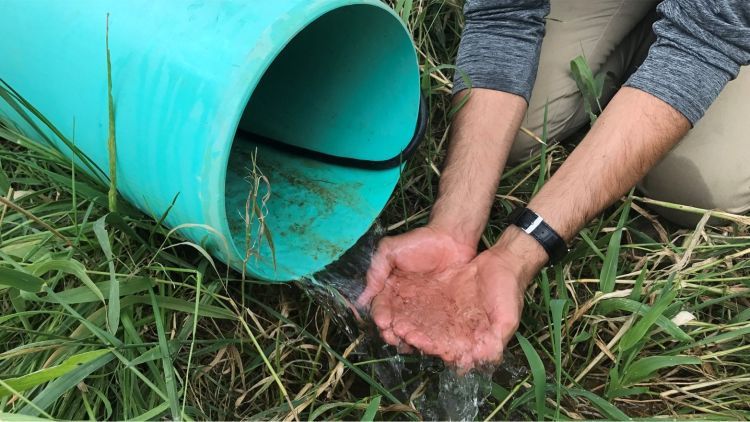For about two decades, annual algae blooms – fed primarily by nutrient runoff from sources like agricultural fields, animal facilities and wastewater treatment plants – have developed in the western portion of Lake Erie.
Algal blooms occur when nutrients (primarily phosphorus in Lake Erie), warm water and adequate light create optimal growing conditions, producing visible colonies in ponds, lakes and other water bodies.
Some types of algal blooms, referred to as harmful algal blooms, or HABs, produce toxins that are harmful to human health and wildlife and threaten the water quality of the lakes. In the Western Basin of Lake Erie, blooms of blue green algae called cyanobacteria can produce toxins that can kill fish, mammals, birds, and can cause human illness.
According to a study by the National Oceanic and Atmospheric Administration, harmful algal blooms cause approximately $82 million annually in economic losses in fishing and tourism in the Great Lakes region.
Together with farmers and agricultural stakeholders across Michigan, and supported by partnerships with the Michigan Department of Agriculture and Rural Development and Michigan Department of Environment, Great Lakes, and Energy, MSU AgBioResearch scientist Ehsan Ghane is exploring practices he hopes will assist Michigan farmers in abiding by what he calls, “the golden rule of drainage – drain only what is necessary for crop production and not a drop more.”
Ghane, associate professor and MSU Extension specialist in the Department of Biosystems and Agricultural Engineering, focuses his research and outreach efforts on agricultural water quality and quantity. His goal is educating stakeholders (e.g. producers, drainage contractors, crop advisors, conservation professionals and agency personnel) to increase the performance and profitability of subsurface drainage systems, while reducing harmful water-quality impacts.
Ghane and his research team recently received a $1.2 million grant from MDARD to continue a project called “Edge-of-Field” with the objective to investigate the effectiveness of conservation drainage practices.
“There is good understanding and best management practices around addressing the movement of surface runoff from farmland, but this is not so true for water moving through tile lines,” said MDARD Environmental Stewardship Division Director James Johnson. “The important research being done by Ehsan Ghane and his team at MSU is helping us to better understand tile-line movement of nutrients in water. This will allow for the development of a best management plan that advocates for drainage control structures, as well as a management system for controlling the release of water from those structures.”
ESD plans to use information gleaned from the study to develop farmer education to better control nutrient and water releases in the short term, and ultimately use these plans as part of the Michigan Agriculture Environmental Assurance Program verification process, Johnson added.
The grant will fund continued data collection and management implementation on three partner farms in the River Raisin Watershed. Ghane’s project is testing the effectiveness of two types of water management systems – controlled drainage and saturated buffers – to see how they are best implemented and how much phosphorus can be reduced and kept out of surface water.
“We want to show how effective these practices are and show farmers how beneficial they are, so we can encourage people to implement them. We eventually want farmers to adopt these practices voluntarily to improve water quality and their crop yield,” Ghane said.
To read more, visit the AgBioResearch website.

